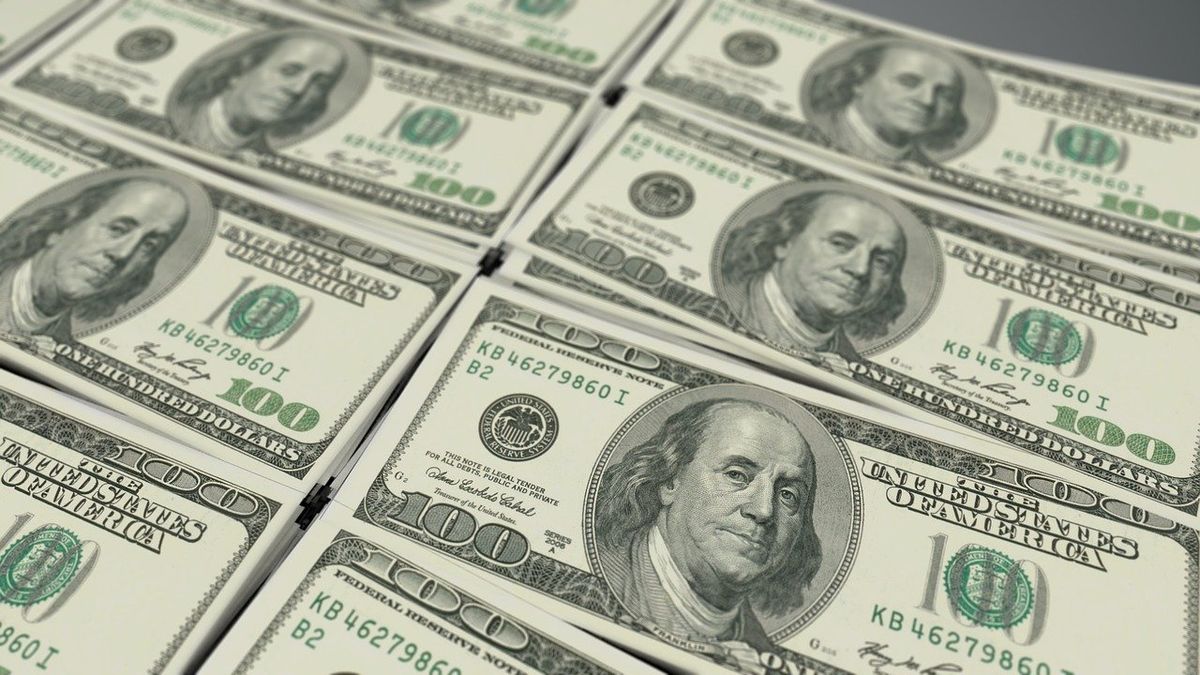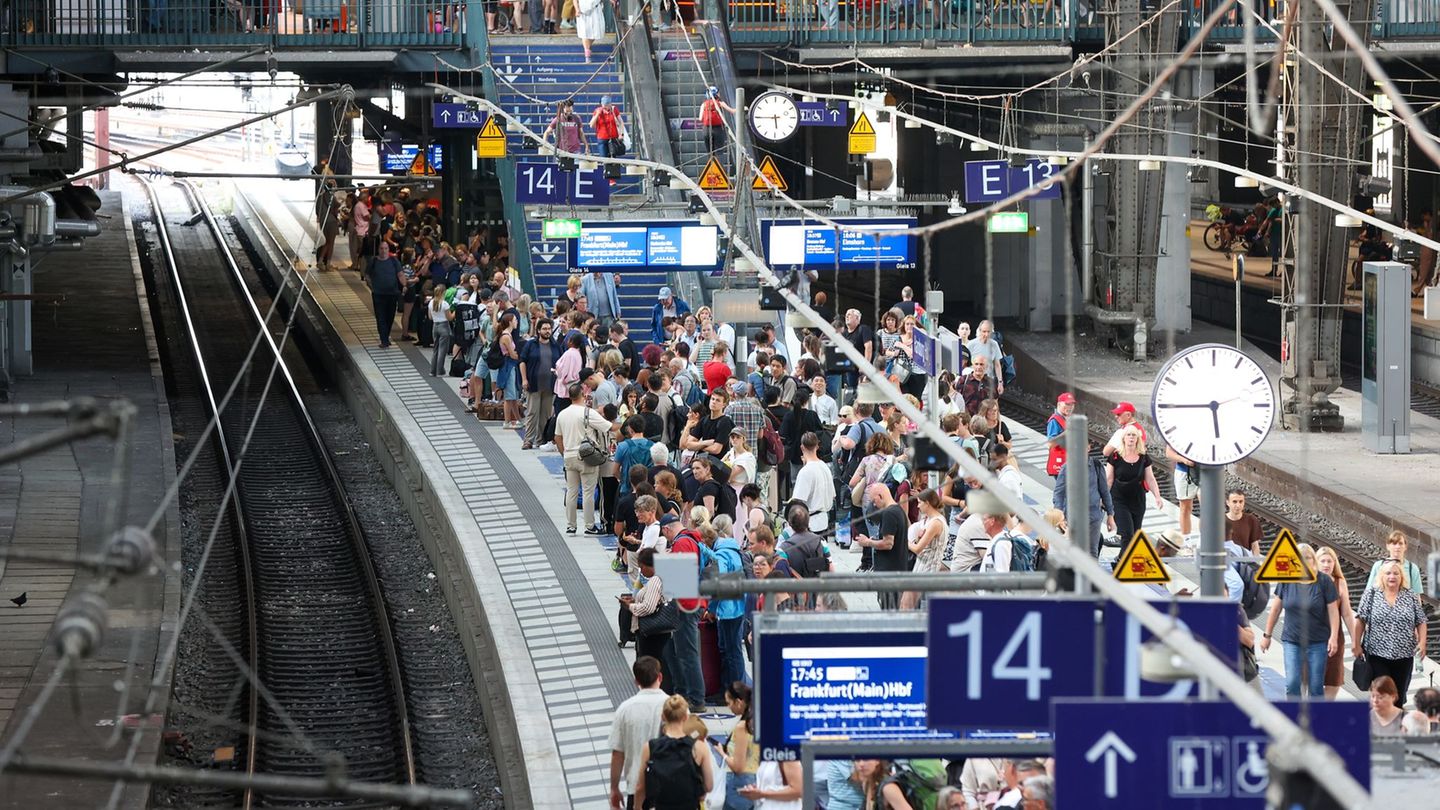“After having exceeded 220 pesos at the beginning of the month, the favorable seasonality generated by the effect of ‘personal property‘ -with investors repatriating assets from abroad to avoid the differential rate-, added to the increase in transactional demand for pesos -characteristic of the month-, push down the ‘CCL’ “, said the Cohen brokerage.
It is important to note that Liquid dollars in an account abroad are subject to an incremental rate (2.25%), while those held in the account of a local broker are considered in the country, since they are credits with the ALyC itself or with the Caja de Valores, so the tax rate is 1.25%.
The ‘cash with settlement’ (CCL) is the stock exchange method by which local assets are bought in pesos and settled in dollars abroad, with the reverse path for what they intend to bring money into the country.
The foreign exchange repatriation occurs despite economic uncertainty: slow negotiations with the IMF, high inflation, legislative rejection of the 2022 budget project and an over-issuance of funds to the Treasury, are just some of the issues that the country carries, after the defeat of the Government in the recent mid-term elections.
Last week the country paid about US $ 1,900 million in capital, so the net reserves of the Central Bank (BCRA) were approximately US $ 2,500 million.
Roberto Geretto of Fundcorp, stated that the resources “are insufficient to face the payments that Argentina must make in the first months of 2022, especially with the IMF.” “Hence the need for an agreement before March“, he said.
“The Net international reserves will return to near end-2020 lows by year-end, despite the commented positive current account balance, the persistence (and tightening) of exchange restrictions and the extraordinary income of SDR (Special Drawing Rights of the IMF for some 4.3 billion dollars) in September, “said the consulting firm Ecolatina.
Official dollar
The wholesale dollar rose eight cents to $ 102.62, with the constant regulation of the BCRA, in a wheel in which it operated very stabilized around the values set by the monetary authority with its usual positions in the market.
The Central Bank (BCRA) chained its eleventh consecutive day without foreign currency sales, buying $ 5 million net this Tuesday. In this way, the authority made purchases for about US $ 70 million in the last 11 wheels, a meager amount but that contrasts with the losses suffered since the beginning of the month (US $ 330 million).
Maximum at $ 102.62 and minimum at $ 102.61, marked the narrow path exhibited by the price of the wholesale dollar in another wheel with low volume of operations. The Central Bank remained with a reduced participation, absorbing at the end the slight excess of supply available in the market, simultaneously setting a new floor of the dollar in the market.
In the first two days of this week, short for the next holiday on Friday, the wholesale exchange rate rose 32 cents, equaling for now the total correction of the previous week.
“The perceptible improvement in the income level exhibited by the cereal complex contributes to the official strategy by relieving the Central Bank of the requirement to meet the demand for the payment of imports that, according to official sources, is a record for the current month” , highlighted the analyst Gustavo Quintana.
The The dollar today rose 20 cents this Tuesday to $ 108.14 -without taxes-, according to the average in the main banks of the financial system. In turn, the retail value of the currency at Banco Nación rose 25 cents to $ 107.75.
The saving dollar or solidarity dollar -which includes 30% of the COUNTRY tax, and a 35% on account of the Income Tax- advanced 33 cents to $ 178.43.
The dollar blue climbed $ 2.50 on Tuesday and closed near its 2021 high, according to a survey of Scope in the Black Market of Foreign Currency. Therefore, the gap with the officer exceeded 100% for the first time since November 19.
The informal dollar culminated at $ 206, its highest closing value since November 11, the day it touched 207 pesos, until now its all-time intraday record. The spread with the wholesale exchange rate, which is regulated by the Central Bank (BCRA) amounted to 100.1%.
It should be remembered that in the first fortnight of December the blue dollar had fallen to $ 195.50 (December 13), conditioned by a greater demand for pesos, something common at this time of year, before the payment of the Christmas bonus, plus the need of cash before the festive dates of Christmas and New Years.
In the accumulated of the whole month, the blue registers an increase of $ 4.50 (2.2%). In addition, In the accumulated of 2021, the parallel dollar shows an appreciation of $ 40 (24.1%), well behind the accumulated inflation of 2021, above 45%.
Source From: Ambito
David William is a talented author who has made a name for himself in the world of writing. He is a professional author who writes on a wide range of topics, from general interest to opinion news. David is currently working as a writer at 24 hours worlds where he brings his unique perspective and in-depth research to his articles, making them both informative and engaging.




